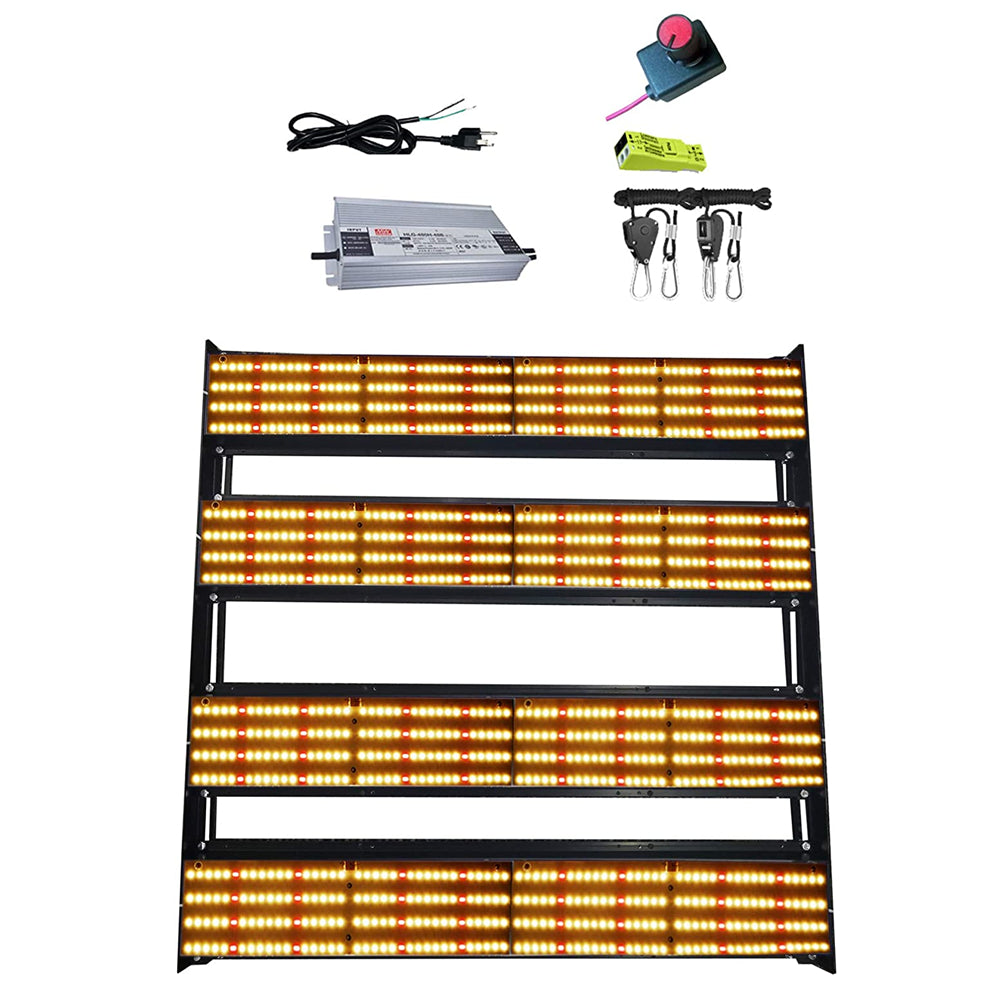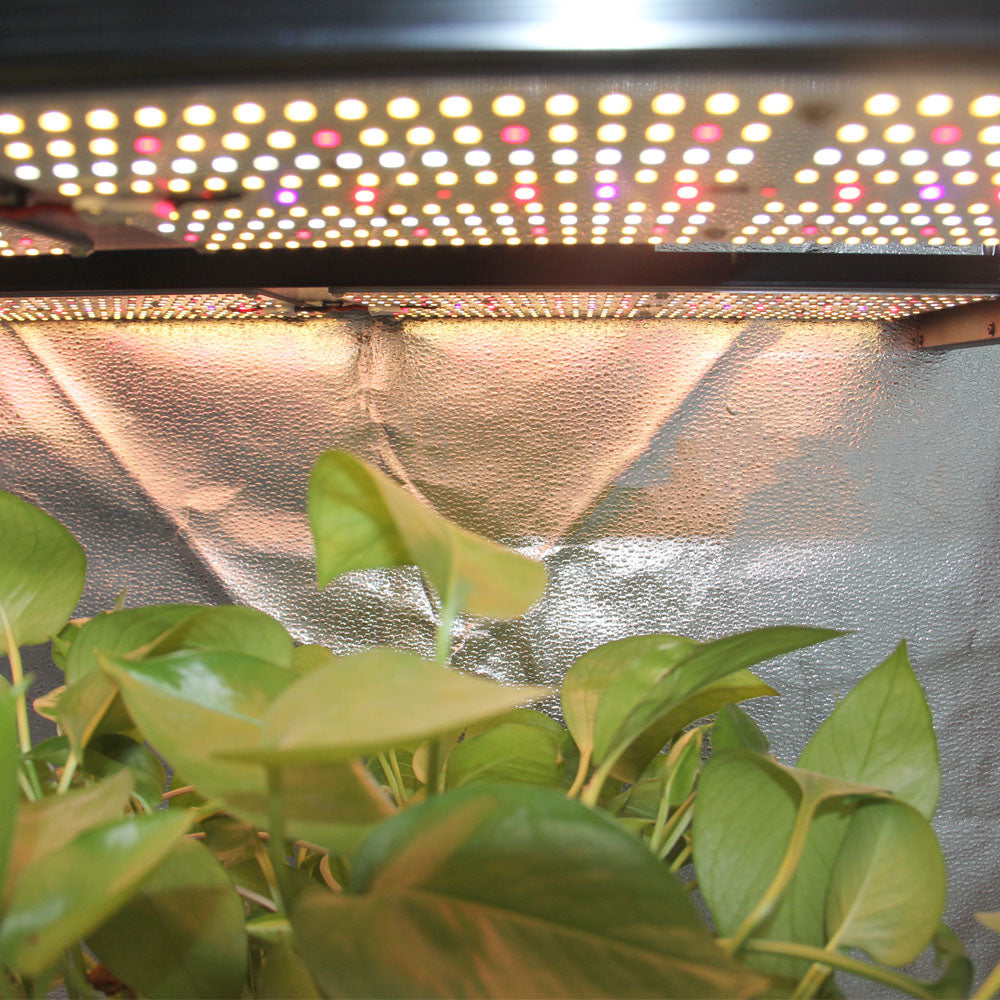How To Protect Your Medicinal Plants From Heat Stress?
When a heatwave hits, plants may show the impact.
- Most plants grow best in temperature ranges 59-86F.
- When temperatures above 90F are sustained for long periods, plant growth is slowed, and some plants begin to show signs of stress.
- Above 104F, many plants will survive but will show different signs of heat stress dependent on plant type, maturity of the plant, and factors that often come with high temperatures, such as drought or wind.
- Extreme air and soil temperatures slow down chemical activity and growth in plants.
What are signs of heat stress in plants?
- Leaf rolling and cupping
- Wilting
- Dry leaf edges
- Ozone damage
- Blossom and fruit drop
- Bolting
- Sunscald
- Blossom end rot
How to reduce heat stress in plants
Watering
While recommendations regarding the ideal timing of watering vary, deep watering is preferred over shallow watering. Morning watering is often prescribed in times of high heat, but wilted plants should be watered as soon as is reasonable to minimize the time spent in a wilted state.
Know your plants' roots:
- Shallowly rooted plants will dry out more quickly and will wilt faster.
- Tap-rooted plants can draw water from deeper into the soil.
- Young plants with less root development will need water more often than older, established plants with a large network of roots for drawing moisture from the soil.
Mature trees can suffer from heat and drought stress just like smaller plants but may not show symptoms of that stress until much later.
Mulch
Mulch conserves moisture in the soil by slowing evaporation and minimizing temperature fluctuation in the soil. Shallowly rooted and young plants will be most impacted when the top few inches of soil are hot and dry.
Provide shade
Move containers where they get shade. Provide shade cloth or other means of shade, where possible. Heat stress is compounded when other plant stressors like drought, wind, or intense sun are also present. If using a shade device not typically used for gardening, like a beach or picnic umbrella, consider adding it in the late morning and removing it towards the end of the day so plants get some direct sunlight. Be prepared for plants that are heavily shaded for long periods to “stretch” towards more light. So you can plant your grow indoor and use led grow lights to offer sunlike light.
ECO FARM 480W V3 SAMSUNG 301H CHIPS MEANWELL DRIVER MOVABLE QUANTUM LIGHT BAR

Description:
- Reliable passive-cooled design (no cooling fans required)
- Dimmable high-efficiency Meanwell driver.
- High-quality original diodes from famous brands like Samsung, Epistar.
- Adjustable distance between heatsinks effectively allows growers to cover the gradual growing plants.
- Full-spectrum 3500K top bin LM301H diodes with supplemental 660nm Deep Red for vigorous flower development.
- High Efficiency and PPFD value
ECO FARM 480W FOLDABLE SAMSUNG 301B/301H QUANTUM BOARD WITH MEANWELL DRIVER UV+ IR SEPARATELY CONTROL

Description:
- Reliable passive cooled design (no cooling fans required)
- Dimmable high-efficiency Meanwell driver
- High-quality original diodes from famous brands
- Prolonged and thickened heatsink
- Full-spectrum mixing the most vital extra wavelength 660nm 730nm 395nm for both veg and flower
- Adding high-quality driver box makes it safer
- Separate IR, UV switches designed for all growth stages
- ECO Farm 480W quantum board with Samsung LM301B / 301H chips series adopts beautiful case and double switch, suitable for VEG and Flower grow stage.
ECO FARM 240W/320W/480W/660W WATERPROOF LIGHT STRIPS WITH OSRAM CHIPS FULL SPECTRUM FOLDABLE LED LIGHT

Description:
- ECO Farm MH series LED grow light can achieve your target yields, consistency, and quality. Save your time, money, electricity, and space.
- With robust, reliable, ideally-shaped design for simple utilization and excellent uniformity. Full growing spectrum for exceptional versatility and quality.
Provide humidity
Leaves take in small amounts of moisture through the stomata or openings in the leaves. In small-scale gardens and home greenhouses, providing additional humidity can be helpful for many plants.
Typically, applying moisture to leaves intentionally is not recommended in the garden: leaf moisture along with the presence of a pathogen and the right temperature increase susceptibility to plant disease. However, in cases of prolonged high temperatures, the benefit of a humid environment probably outweighs the risk of plant disease.
Some strategies for adding humidity could be a morning, light overhead watering to the leaves or canopy, or greenhouse plants. Outdoor container plants can be grouped together and misted with a mist sprayer. A pressurized mist sprayer makes this job easier with large numbers of plants or large plants.
If your plants are indoor, you can use plant humidifier to add humidity for your plants.
Don’t plant or transplant
Too-warm soil temperatures can kill young seedlings, or cause cankers where the stem meets the soil line. Transplanting is stressful to plants without the added issues caused by high temperatures. Postpone planting or transplanting until cooler temperatures arrive.
Don’t prune trees and shrubs
Removal of leaves and branches means a new part of the canopy will be exposed to sunlight. In times of intense heat, this can lead to sunburn in leaves that were previously shaded. Trees and shrubs with sunburn in a portion of the canopy will likely recover but will be unattractive in the meantime. Stressed trees are more likely to attract damaging insects like wood-boring beetles.
Wait to fertilize
During periods of intense heat, inducing new growth is not ideal. Wait until a cooler period for this garden activity.
Don’t apply chemicals
Many treatments for plant disease and insect issues can damage plants when temperatures are consistently above 80F: check the label of a product for specifics before applying. Some plant types such as conifers and succulents can be further damaged by any treatment—even soap or neem oil—applied during extreme heat.
Reduce competition from plants
One activity to not postpone in the garden during a heatwave is harvesting. Many plants are better adapted to extremes than ornamental plants: they compete with garden plants for water and nutrients.
These are the ways to protect plants from heat stress, if you are interested in plant system, we have the most professional teem about it and we have all plant tools you need, welcome to visit our official website: ecofarm.ca
Our emails address is: business@ecofarm.ca
Contact:

